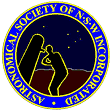Loading AI tools
Amateur astronomy club in the state of New South Wales, Australia From Wikipedia, the free encyclopedia
The Astronomical Society of New South Wales (ASNSW) is an amateur astronomy club in the state of New South Wales, Australia, founded in 1954.[1]
 | |
| Abbreviation | ASNSW |
|---|---|
| Formation | 1954 |
| Legal status | Incorporated association |
| Location | |
| Membership | Over 400[citation needed]. |
Publication | Universe Magazine |
| Website | www |
The society's objectives, as stated in their constitution, are to "bring together people interested in astronomy and related sciences, and to promote public interest and education in astronomy. The ASNSW provides members and the general public access to Astronomical observing facilities, educational lectures, and assistance in selecting, using and even building telescopes and related instruments".[2]
The ASNSW has many sections dedicated to providing support to members interested in specific aspects of astronomy, including astrophotography, computing, solar observing, the Solar System, double and variable star observing, deep sky observing and telescope making. The society also runs two dedicated observing sites; one at Mount Bowen near Sydney, and the other near Ilford.
The society was founded in 1954 as the "Sydney Amateur Astronomers" by Gordon Patston, an aerospace engineer lecturing at Sydney Technical College. The club started with about fifteen members with Patston as the president. The first meetings were held in the garage behind Patston's house in the suburb of Belfield.[3]
As the group attracted new members, it became too large for the garage, resulting in a permanent clubhouse being constructed within the Patston family backyard. The majority of work was done by club volunteers, and on the 18th of September 1959, the new facility was officially opened by the astronomer, Bart Bok, the then Director of Mount Stromlo Observatory.
The club was very active through the late 1950s and 1960s, with general-interest events such as public open nights and sections for special purposes such as a junior section. It also worked with professional observers on a number of research projects, including a flare star observing program at the request of the CSIRO and the measurements of transits of artificial satellites across the moon as part of the Smithsonian Astrophysical Observatory's "Project Moon-watch".[4]: 85 A program for observing artificial satellites was set up at shortly after the launch of the Sputnik satellite on 4 October 1957. The club was the first group in the world to see the first artificial satellite, Sputnik I, in October 1957[5] and they went on to record three of the first four Sputnik observations.[3][6]
In 1964 the society's name was changed to the "Astronomical Society of New South Wales", to better reflect the scope of its membership.
In 1969/70 the Society suffered two major setbacks. First, the Society was forced to sell its headquarters when the Council re-zoned and subdivided the Patstons' block of land. Second, the Society lost its president when Gordon Patston moved to England to take up a Churchill Fellowship to study aerospace engineering. The combination of events caused financial hardship for the club, and the lack of a permanent venue initially made it difficult to attract and retain members. At its lowest point in the mid-1970s, membership numbers dropped to less than fifty.[7]: "Ken Wallace" It took nearly ten years to build membership back up to previous levels.[3]
In 1973 the society acquired a long-term lease from the government for the Crago Observatory site on Bowen Mountain, but in spite of being used regularly, the official inauguration was not held until 20 years later, in 1993. Then in 1987, the society purchased the Wiruna property near Ilford, to get away from the increasing glare of the city lights which interfered with observing.[4]: 87, 88
In 1985 the society was incorporated under the Associations Incorporation Act.[8] The society was an early adopter of computer and communications technology, establishing their website in April 1995.[4]: 87
The society normally holds two general meetings each month.[9]

Starting in 1993, the "South Pacific Star Party" (SPSP) is held each year at the Society's dark-sky observing site "Wiruna", attracting between 200 and 400 Australian and international amateur astronomers.

The Society has two main observing sites where regular observing sessions are held for its members and guests:
Both of these sites are classified as "designated optical observatories" (numbers D03-41 and D03-50) by the Astronomical Society of Australia on the basis that they are judged to be valuable astronomical resources for research, education and community use.[10]
Three members of the society listed below have collectively discovered well over 500 comets, asteroids (minor planets), and novae.[11][12]

Seamless Wikipedia browsing. On steroids.
Every time you click a link to Wikipedia, Wiktionary or Wikiquote in your browser's search results, it will show the modern Wikiwand interface.
Wikiwand extension is a five stars, simple, with minimum permission required to keep your browsing private, safe and transparent.